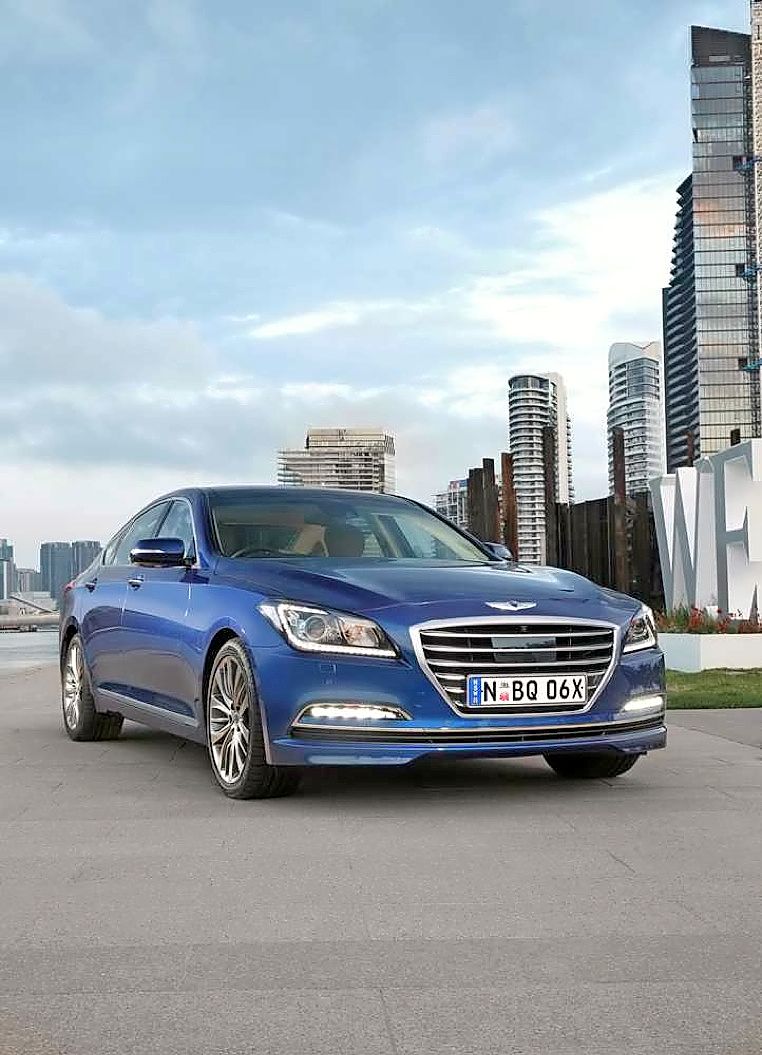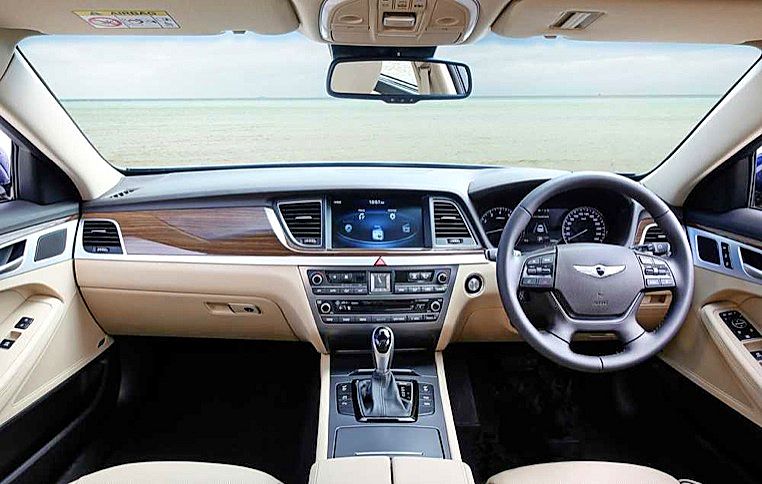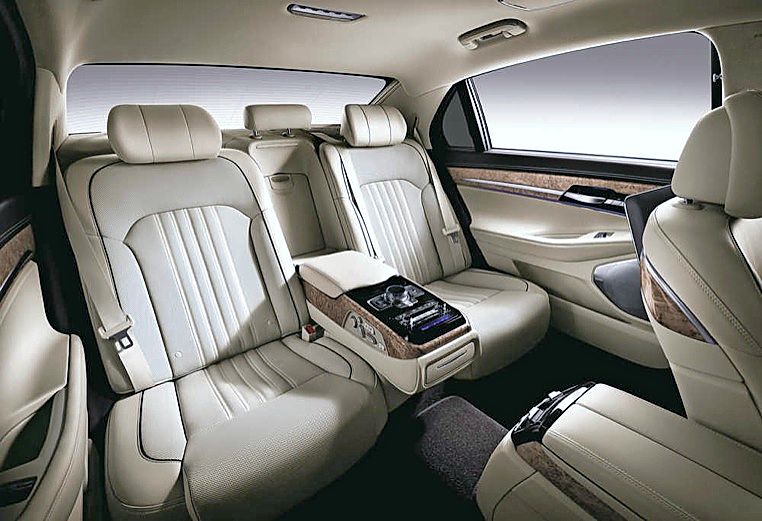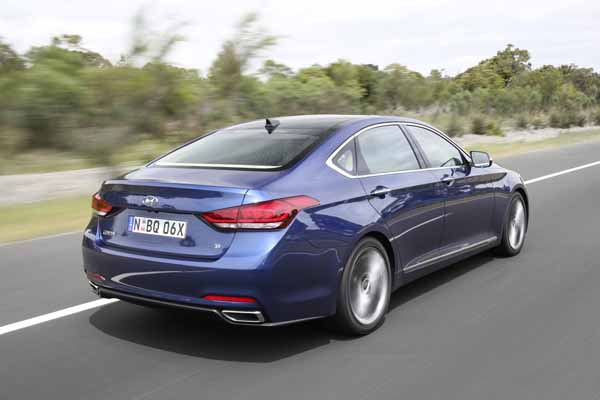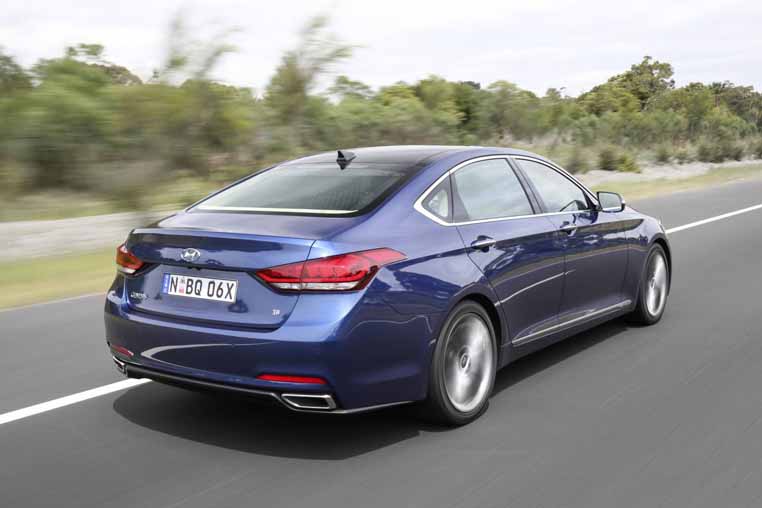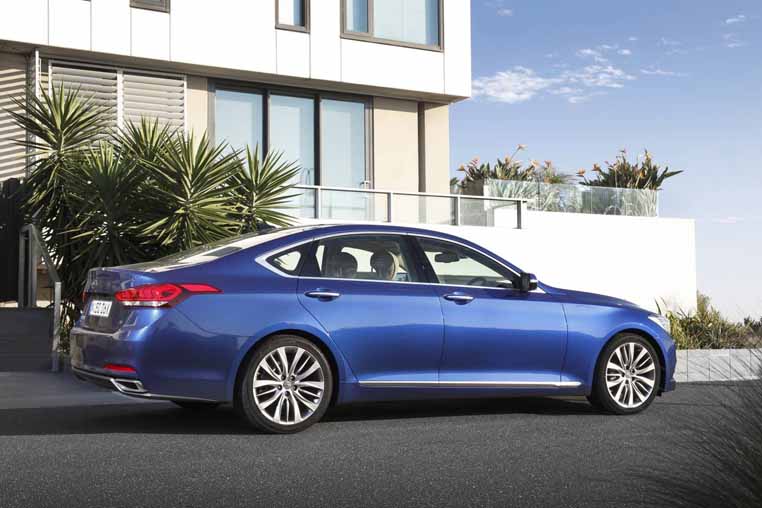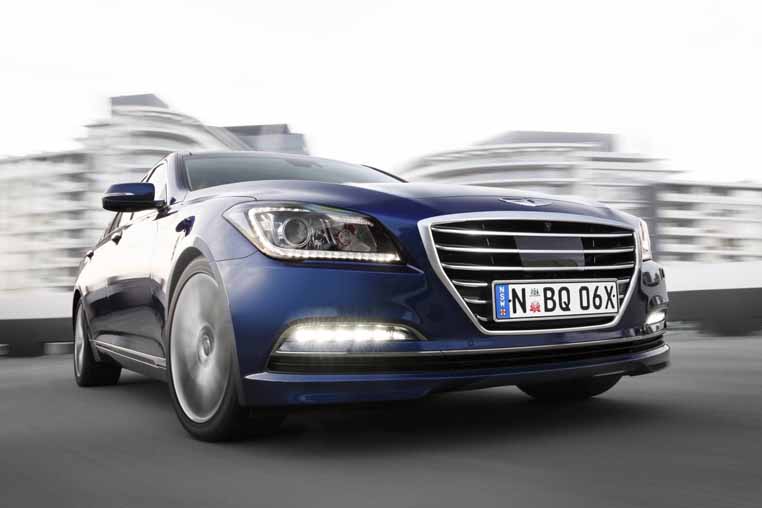David Bonnici spent a luxurious week on the west’s roads in the Hyundai Genesis
Hyundai seems to love a challenge. For years it has implored drivers to look beyond the badge when comparing its cars to popular Japanese models.
Now the king of small cars with its i30 and a strong competitor in the SUV market, the Korean car maker has decided to once again tackle prejudices by competing against established luxury European brands.
I first test drove the Hyundai Genesis at it’s Australian launch in Canberra in 2014 and was really impressed by its solid presence, luxury and handling.
But this time around, it was good to get more than just a few hours and to be without the influence of Hyundai’s generous hospitality and the novelty of driving around the nation’s capital and stunning rural surrounds.
After a week driving this car in Melbourne’s western suburbs during the daily grind, I’m still impressed.
Hyundai’s foray into the luxury car market isn’t just an automotive equivalent of applying cosmetics to a pig.
This car is built from the ground up as a luxury car. It has the looks, refinement, luxury and safety features to more than match it with cars featuring an extra digit in their price tags. It looks great and it was really interesting to watch people trying to figure out exactly what it was.
Inside
The Genesis welcomes you into its plush interior via its winged logo projected on to the ground at the foot of the front door. The welcome extends to the driver’s seat moving into position and a short musical serenading before you press the push-button start.
The driver’s seat is really comfortable. Electronic settings include a four-way lumbar support for lower back and hips. The seat cushion moves independently to support your calves and the soft leather seats have heating and cooling.
The headrests are soft and feel soothing after a hectic day. You can drive for a long time in this car before you feel fatigued.
CLICK HERE FOR MORE STAR WEEKLY CAR REVIEWS
Rear-seat passengers are well looked after with sofa-like comfort and adjustable support and a centre fold-down armrest that allows them to control the entertainment system, air-conditioning and even the position of the front passenger seat to have more leg room.
The back doors almost open to right angles to allow for easier access
The interior itself is stately with quality fittings available in a range of colors and trims. Other interesting touches include a powered rear window blind that provides sun protection or privacy and manual blinds that you can manually pop up to shade the passenger door windows.
The dashboard is nicely laid out and the gauges look good. The trip computer is the same as in other Hyundai models.
One thing that isn’t stock standard is the multimedia and navigation system, featuring a 9.2-inch high-definition touchscreen, and satellite navigation featuring live traffic updates. There’s also 360-degree views to help you park. The Lexicon surround-sound system is epic, pumping out your favorite tunes through 17 speakers.
The boot is big, so there’s no issues with this car being used for airport runs.
The drive
On the road, the Genesis feels incredibly smooth and road noise is really low, though the sound insulating windows do rob you of the nice growl the 3.8-litre V6 makes when you floor it.
Acceleration is great and there are paddle shifts if you feel like a bit of sporty driving though I was more than content to drive in auto. Put your foot down and it goes like a beast.
I like the head-up display that shows speed, cruise control settings, displays if cars are in your blind spot, warns you if you stray over the white line and flashes red if it thinks you’re at risk of colliding with the car in front.
While it isn’t built in Australia, Hyundai tested the Genesis in Australian conditions for a couple of years so it’s introduction here wasn’t just a matter of driving it off a ship and hoping for the best.
Despite being a big car with a big engine, fuel consumption wasn’t that bad. I averaged 10.2 litres per 100 kilometres on all kinds of roads and in all sorts of traffic conditions.
Safety
When released in 2014, the Genesis had the highest ANCAP safety rating of any car to be sold in Australia with a total score of 36.88 out of 37.
This was due to the high-tensile steel shell, nine airbags and a suite of electronic safety wizardry including blind-spot detection, lane departure warning, rear cross-traffic alert, radar cruise control and autonomous emergency braking.
The Genesis comes with three option packages – Genesis, Genesis with Sensory Pack and Genesis with Ultimate Pack.
The Ultimate Pack, which I test drove, has everything described above, while some of the luxury items aren’t in the other two. The base model is also without some of the electronic safety features though it shares the same high ANCAP rating.
The Hyundai Genesis continues to surprise people who were unaware Hyundai made cars at this level. While it’s up against the likes of the Lexus and BMW 5 Series, I think it will come into its own when Holden stops making the locally produced Caprice.
Prices start from around $65,000 for the base model Genesis to just under $90,000 for the Ultimate pack, which is almost $20,000 cheaper than the BMW 528i despite having more features.
www.hyundai.com.au/cars/luxury-cars/genesis


